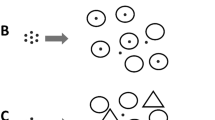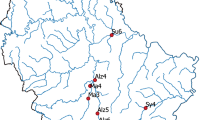Abstract
Viruses are the most abundant and dynamic biological entities in the world's ecosystems. Marine sediments, the largest biome in the world, have the potential to represent an optimal environment for viral development. To assess the viral effect on their hosts, and to understand the ecological role of the viruses in the benthic food webs and biogeochemical cycles, measurements of benthic viral production are needed. Different direct and indirect approaches have been proposed to estimate viral production in aquatic sediments, but a standardized protocol is not available yet. The method presented in this protocol relies on the short-time incubations of sediment samples with virus-free seawater, and the subsequent determination of the increase in viral abundance over time by epifluorescence microscopy. The protocol described here is highly reliable, inexpensive and easy to use. The entire procedure takes approximately 3 days to be completed, but the method allows the parallel processing of several sediment samples, which is recommended in ecological studies.
This is a preview of subscription content, access via your institution
Access options
Subscribe to this journal
Receive 12 print issues and online access
$259.00 per year
only $21.58 per issue
Buy this article
- Purchase on Springer Link
- Instant access to full article PDF
Prices may be subject to local taxes which are calculated during checkout


Similar content being viewed by others
References
Fuhrman, J.A. Marine viruses and their biogeochemical and ecological effects. Nature 399, 541–548 (1999).
Suttle, C.A. Viruses in the sea. Nature 437, 356–361 (2005).
Danovaro, R. et al. Major viral impact on the functioning of benthic deep-sea ecosystems. Nature 454, 1084–1087 (2008).
Heldal, M. & Bratbak, G. Production and decay of viruses in aquatic environments. Mar. Ecol. Prog. Ser. 72, 205–212 (1991).
Waterbury, J.B. & Valois, F.W. Resistance to co-occurring phages enables marine Synechococcus communities to coexist with cyanophages abundant in seawater. Appl. Environ. Microbiol. 59, 3393–3399 (1993).
Proctor, L.M. & Fuhrman, J.A. Viral mortality of marine bacteria and cyanobacteria. Nature 343, 60–62 (1990).
Weinbauer, M.G., Fuks, D. & Peduzzi, P. Distribution of viruses and dissolved DNA along a coastal trophic gradient in the northern Adriatic sea. Appl. Environ. Microbiol. 59, 4074–4082 (1993).
Steward, G.F., Wikner, J., Smith, D.C., Cochlan, W.P. & Azam, F. Estimation of virus production in the sea. 1. Method development. Mar. Microb. Food Webs 6, 57–78 (1992).
Wilhelm, S.W., Briden, S. & Suttle, C.A. A dilution technique for the direct measurement of viral production: a comparison in stratified and tidally mixed coastal waters. Microb. Ecol. 43, 168–173 (2002).
Noble, R.T. & Fuhrman, J.A. Rapid virus production and removal as measured with fluorescently labeled viruses as tracers. Appl. Environ. Microbiol. 66, 3790–3797 (2000).
Binder, B. Reconsidering the relationship between virally induced prokaryotic mortality and frequency of infected cells. Aquat. Microb. Ecol. 18, 207–215 (1999).
Winget, D.M., Williamson, K.E., Helton, R.R. & Wommack, K.E. Tangential flow diafiltration: an improved technique for estimation of virioplankton production. Aquat. Microb. Ecol. 41, 221–232 (2005).
Helton, R.R., Cottrell, M.T., Kirchman, D.L. & Wommack, K.E. Evaluation of incubation-based methods for estimating virioplankton production in estuaries. Aquat. Microb. Ecol. 41, 209–219 (2005).
Fischer, U.R., Wieltschnig, C., Kirschner, A.K.T. & Velimirov, B. Does virus-induced lysis contribute significantly to prokaryotic mortality in the oxygenated sediment layer of shallow oxbow lakes? Appl. Environ. Microbiol. 69, 5281–5289 (2003).
Fischer, U.R., Weisz, W., Wieltsching, C., Kirschner, A.K.T. & Velimirov, B. Benthic and pelagic viral decay experiments: a model-based analysis and its applicability. Appl. Environ. Microbiol. 70, 6706–6713 (2004).
Fischer, U.R., Wieltschnig, C., Kirschner, A.K.T. & Velimirov, B. Contribution of virus-induced lysis and protozoan grazing to benthic prokaryotic mortality estimated simultaneously in microcosms. Environ. Microbiol. 8, 1394–1407 (2006).
Bettarel, Y., Bouvy, M., Dumont, C. & Sime-Ngando, T. Virus-bacterium interactions in water and sediment of West African inland aquatic systems. Appl. Environ. Microbiol. 72, 5274–5282 (2006).
Filippini, M., Buesing, N., Bettarel, Y., Sime-Ngando, T. & Gessner, M.O. Infection paradox: high abundance but low impact of freshwater benthic viruses. Appl. Environ. Microbiol. 72, 4893–4898 (2006).
Proctor, L.M., Okubo, A. & Fuhrman, J.A. Calibrating estimates of phage-induced mortality in marine bacteria: ultrastructural studies of marine bacteriophage development from one-step growth experiments. Microb. Ecol. 25, 161–182 (1993).
Guixa-Boixareu, N., Caldero´n-Paz, J.I., Heldal, M., Bratbak, G. & Pedròs-Aliò, C. Viral lysis and bacterivory as prokaryotic loss factors along a salinity gradient. Aquat. Microb. Ecol. 11, 215–227 (1996).
Mei, M.L. & Danovaro, R. Virus production and life strategies in aquatic sediments. Limnol. Oceanogr. 49, 459–470 (2004).
Glud, R. & Middelboe, M. Virus and bacteria dynamics of a coastal sediment: implication for benthic carbon cycling. Limnol. Oceanogr. 49, 2073–2081 (2004).
Middelboe, M., Glud, R.N., Wenzhofer, F., Ogurib, K. & Kitazato, H. Spatial distribution and activity of viruses in the deep-sea sediments of Sagami Bay, Japan. Deep Sea Res. I. 53, 1–13 (2006).
Hewson, I. & Fuhrman, J.A. Viriobenthos production and virioplankton sorptive scavenging by suspended sediment particles in coastal and pelagic waters. Microb. Ecol. 46, 337–347 (2003).
Danovaro, R. et al. Viriobenthos in freshwater and marine sediments: a review. Freshwat. Biol. 53, 1186–1213 (2008).
Corinaldesi, C., Dell'Anno, A. & Danovaro, R. Viral infection plays a key role in extracellular DNA dynamics in marine anoxic systems. Limnol. Oceanogr. 52, 508–516 (2007).
Chen, F., Lu, J.R., Binder, B., Liu, Y. & Hodson, R.E. Application of digital image analysis and flow cytometry to enumerate marine viruses stained with SYBR Gold. Appl. Environ. Microbiol. 67, 539–545 (2001).
Patel, A. et al. Virus and prokaryote enumeration from planktonic aquatic environments by epifluorescence microscopy with SYBR Green I. Nat. Protoc. 2, 269–276 (2007).
Danovaro, R., Dell'Anno, A., Trucco, A., Serresi, M. & Vanucci, S. Determination of virus abundance in marine sediments. Appl. Environ. Microbiol. 67, 1384–1387 (2001).
Wen, K., Ortmann, A.C. & Suttle, C.A. Accurate estimation of viral abundance by epifluorescence microscopy. Appl. Environ. Microbiol. 70, 3862–3867 (2004).
Helton, R.R., Liu, L. & Wommack, K.E. Assessment of factors influencing direct enumeration of viruses within estuarine sediments. Appl. Environ. Microbiol. 72, 4767–4774 (2006).
Middelboe, M., Glud, R.N. & Finster, K. Distribution of viruses and bacteria in relation to diagenic activity in an estuarine sediment. Limnol. Oceanogr. 48, 1447–1456 (2003).
Fischer, U.R., Kirschner, A.K.T. & Velimirov, B. Optimization of extraction and estimation of viruses in silty freshwater sediments. Aquat. Microb. Ecol. 40, 207–216 (2005).
Hewson, I., O'Neil, J.M., Heil, C., Bratbak, G. & Dennison, W. Effects of concentrated viral communities on photosynthesis and community composition of co-occurring benthic microalgae and phytoplankton. Aquat. Microb. Ecol. 25, 1–10 (2001).
Duhamel, S. & Jacquet, S. Flow cytometric analysis of bacteria and virus-like particles in lake sediments. J. Microbiol. Method 64, 316–322 (2006).
Noble, R.T. & Fuhrman, J.A. Use of SYBR Green I for rapid epifluorescence counts of marine viruses and bacteria. Aquat. Microb. Ecol. 14, 113–118 (1998).
Shibata, A. et al. Comparison of SYBR Green I and SYBR Gold stains for enumerating bacteria and viruses by epifluorescence microscopy. Aquat . Microb. Ecol. 43, 223–231 (2006).
Noble, R.T. & Fuhrman, J.A. Breakdown and microbial uptake of marine viruses and other lysis products. Aquat. Microb. Ecol. 20, 1–11 (1999).
Acknowledgements
This work was financially supported by the EU within the framework of the project HERMES (GOCE-CT-2005-511234-1).
Author information
Authors and Affiliations
Corresponding author
Rights and permissions
About this article
Cite this article
Dell'Anno, A., Corinaldesi, C., Magagnini, M. et al. Determination of viral production in aquatic sediments using the dilution-based approach. Nat Protoc 4, 1013–1022 (2009). https://doi.org/10.1038/nprot.2009.82
Published:
Issue Date:
DOI: https://doi.org/10.1038/nprot.2009.82
This article is cited by
-
Nontargeted virus sequence discovery pipeline and virus clustering for metagenomic data
Nature Protocols (2017)
-
Assessing viral taxonomic composition in benthic marine ecosystems: reliability and efficiency of different bioinformatic tools for viral metagenomic analyses
Scientific Reports (2016)
-
Counts and sequences, observations that continue to change our understanding of viruses in nature
Journal of Microbiology (2015)
-
Viruses as new agents of organomineralization in the geological record
Nature Communications (2014)
-
Viral infections stimulate the metabolism and shape prokaryotic assemblages in submarine mud volcanoes
The ISME Journal (2012)
Comments
By submitting a comment you agree to abide by our Terms and Community Guidelines. If you find something abusive or that does not comply with our terms or guidelines please flag it as inappropriate.



